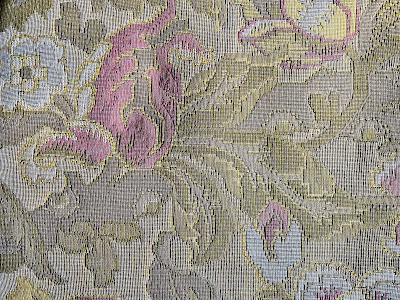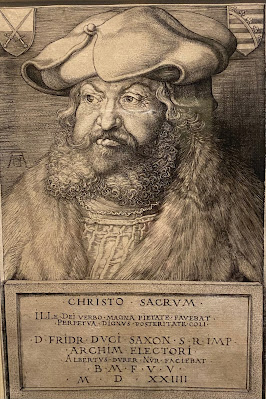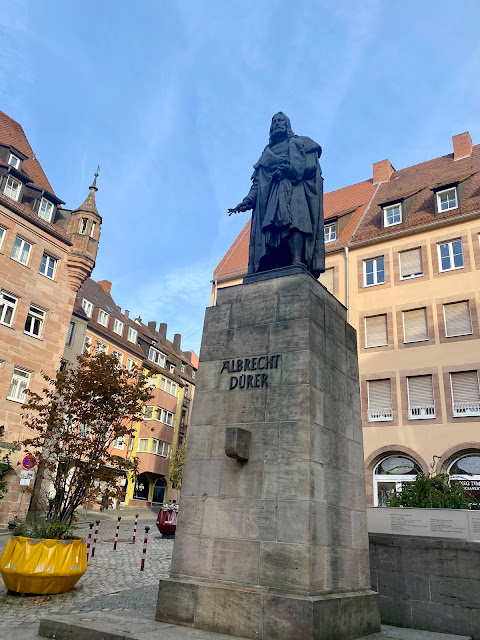Albrecht Dürer's self-portrait, painted in 1500 just before he turned 29, is among the most famous in art history. It hangs in Munich's Alte Pinakothek. Although he lived nearly three more decades, he never painted another. Full-frontal views--practically the only pose we see today--were rare during the Renaissance. His resemblance to Christ is echoed by clever positioning of the letters beneath the epochal year. Does AD refer to his initials, almost a brand? Or Anno Domini?
I couldn't wait to see his home.
A model of the original structure, just below the burg, indicates the morning sun would have warmed Dürer's balcony. He would have had good views of Nuremberg, too.
His paintings fill an entire room on the first floor but they're all reproductions. As time passed and their value increased, his originals were purchased by collectors all over the world, including the Wittelsbachs in Munich.
Climbing up the wooden staircase into his spacious but simple living quarters you instantly get the sense that Dürer loved to surround himself with beautiful things.
Like da Vinci, who was a generation older and with whom Dürer was said to have been in contact, he appreciated the science and technology of the time, including household "appliances."
Leaded windows, including some with stained glass, flood his home with light.
Here's the room where much of the art happened. When Dürer began making prints the technology was relatively new and their distribution helped him achieve the fairly wide acclaim he enjoyed within his lifetime.
From metal plate to print! Astonishingly, Dürer had never seen a rhino. He based this work on written descriptions and a sketch by another artist. It illustrated German elementary school textbooks into the 20th century.
Dürer, who was said to have been unhappy in his childless, arranged marriage to an "old crone" (his description), may have had something else in common with da Vinci, given the undeniable homoerotic content of at least work. You tell me. New York City's Museum of Metropolitan Art owns both "The Rhinoceros" and "The Men's Bath" but neither currently are on display.
A copperplate engraving of Frederick the Wise, one of Dürer's patrons and a prince-elector of the Holy Roman Empire, is exhibited in the house and offers insight into the religious turmoil of the era. Although Frederick did not have a personal relationship with Martin Luther, he defended and protected the church reformer because of his strong belief in the power of law. He sat for this portrait at the age of 60 during the Imperial Diet of 1523. Just five years earlier he had been the papal candidate for Holy Roman Emperor, a position he declined. Frederick died, unmarried, not long after receiving Dürer's portrait. Some say he converted to Protestantism on his death bed. Dürer himself died three years later.
Nuremberg has been celebrating its (untainted) favorite son for centuries, both officially and commercially. The internet likes him, too. Search "praying hands" and look at the first image that Google highlights.
More Bavaria:
























No comments:
Post a Comment